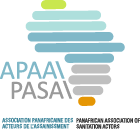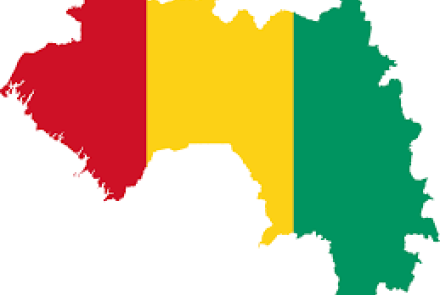Septage Empties Association of Kenya is a catalysts private sector institution that seeks tobring harmony and synergy withinthe wider sanitation ecosystem, its value chains and actorsin Kenya. Despite septage emptiers' integral role in the sanitation ecosystem, comprehensive institutional governance harmony inthe industry and its actors has inadequate governancecapacity and capability.
In line with global trends in efficiency and reliability, SEAK has been workingto transform sanitation value chains into an efficient sanitation governance systemthat realizesmaximum value and efficiency from fecal sludge management as a service and as an enterprise.The Association represents, advocates for policy review and lobbies for service providers in the emptier and septage Industry, an often maligned, severally criticized but little understood component of the sanitation value chain.
The formation of the Association and advocacy has seen great trends and inclusion with the National Government, County Government, and the Water Service Provider; The Advocacy of (SEAK) has influencedthe Kenyan Government to accept and recognize the existence of the pit manual empties, and the need to self-regulate the mechanized pit empties and the consideration of reviewing exciting policy, safety guidelines and inclusion of the pit empties in planningand implementation of sanitation programs in the country. These lessons on the role of private sector actors in sanitation governance can be replicated in other developing countries with similar socio-economic conditions.
ABSTRACT
- Background
Up to 644million people in sub-Saharan Africain 2011 were usingan unimproved toilet facility or resorted to open defecation,onlya fraction of the estimated volume of faecal sludge reaches safe disposal sites, the rest is either used in agriculture or aquaculture or discharged indiscriminately into the environment, posing a serious health risk.In most of the countries, institutional arrangements are complex and fragmented, the structure of local authorities and the delineation between urban and rural jurisdiction vary considerably. Furthermore, the imited capacity, inadequate by-laws and enforcement, action plans and budgets hampereffectivesanitation interventions. National budgets allocate significantly more to water than to sanitation. To meet the Sustainable Development Goal for sanitation, sub-Saharan Africa needs to invest an estimated 0.6 percent of its gross domestic product (GDP) annually on sanitation.
Five of the eight countries (Ethiopia, Kenya, Malawi, Zambia and Zimbabwe) spent less than 0.6%, of their budgets on sanitation interventions. In Kenya, The governance of Faecal Sludge Management has many actors at the National and County government level that play different roles. However, the synergies and harmoniousintegration betweenthe publicand private sector have remained unaddressed. This paper therefore seeks to underscore the important role played by the pit empties operators and informal sector workers in faecal sludge management and sanitation value chain and their involvement in all the processes of planning, policy formulation and implementation. It shares the promising results of the work undertaken by [SEAK] [5] in linkingwith the umbrella body Pan Africa Sanitation Actors [PASA] Which brings together, African countries to promote the professionalization of the emptying profession, exchange concepts of best practices, sharing the knowledge of technologies available and defending the rights and inclusion of the sanitation workers towards securing formal recognition and promoting the welfare of the pit empties besides highlighting the challenges that still require redress.It’sestimated that 89%of Kenya's urban populationis not connected to sewers and depends on on-site sanitation technologies.
The total population of Kenya is about 47.6 million people [1], and out of this, the urban population is about 27% or 12.5 million people. In these areas, on-site sanitation systems still predominate [2]. Faecal sludge management, as a service to households is left to pit empties and informal sector workers, who have no clear Policies, Guidelines, and Planning. Emptying is usually done mechanically by exhauster trucks, where people plots are not accessible by vacuum truck, households resort to non-regulated manual emptying. In a majority of urban centres in Kenya, faecal sludge management (FSM), as a service to households, is largely not considered by the County Governments and WaterService Providers and is left to unregulated, private operators and informal sector workers (i.e. manual pit empties) some who operate at night to dispose of faecal sludge directly into the environment, without any treatment, posing public and environmental health to risk [3] and [2],The emptying is usually done mechanically by exhauster trucks.
However, where people cannot afford the mechanized services or the plots are not accessible by vacuum truck, households often resort to non-regulated manual emptying, exposing the empties to great health risks and hazards. Therefore, protecting the interests of the pit empties and health of the sanitation workers involved is necessary and important towards achieving the four of the 17 SDG, s [4] (Goal 3: Good healthand well-being) [4]. They can play an integral role in public health through proper collection and disposal of faecal sludge. (Goal 6: Clean water and sanitation) [4]. They complete the sanitation cycle by serving households unable to access existing sewer lines (Goal 11: Sustainable cities and communities) [4],providing a virtual sewer and sanitation network with data to inform planning (Goal 14: life below water) [4] preventing contamination of surface & sub-surface water resources with untreated wastewater, while in all ensuring sustainable sanitation value chain. This can best be achieved through mainstreaming their interests and concerns in policy and legislation processes that will help address a number of gaps towards formalizing legal recognition and further help set up the regulations that will promote the work of sanitation workers especially the manual pit empties safety, health, and dignity.
- Problem
Most (98%) of Kenya's 47.6 million citizens use on-site sanitation solutions/ technologies whereby12.5 million of the country’s residents people live in urban areas where on-site sanitation systems are dominant. In Nairobi, only 50.6% of the metropolis 4.5 million+ residents have access to the main sewer infrastructure.The city's growth is further complicated by informal and low-income settlements that house 60% of its inhabitants. Informal settlements have given rise to manual emptiers, entrepreneurs who collect and dispose of fecal sludge using rudimentary tools (with little protection) that canaccess crowded informal settlements inaccessible to motorized emptiers.Over 200 motorized septage emptiers and countless manual emptiers managing close to 1.8 million liters of fecal sludge collected daily make do with one discharge point in Njiru, approximately 13km South West of the CBD.The problem is further exacerbated by water. Kenya is a water stressed country with 36% of its residents dependent on below ground water sources (wells, borehole, springs, etc) for their water, the same ground that houses 98% of the on-site sanitation systems (septic tanks, pit toilets).
Despite playing an integral role in fulfilment of 4 out of the 17 SDGs (Good Health and Well Being [3], Clean water and sanitation [6], Sustainable cities and communities [11] and Life below water [14]) through their virtual sewer network, septage emptiers are not adequately plugged into the greater sanitation ecosystem with regard to policy formulation, regulations, operational standards, equity in opportunities, awareness creation and innovation.Even more worrying is the urbanization phenomenon with the introduction of devolution, the County Governments, urban centers in Kenya's hinterlands experienced growth (largely unplanned) averaging at 4.23% per annum. Devolution notonly decentralized governance, commerce and settlement from Nairobi, but also the sanitation challenge as well, to urban centers in rural areas with non-existent sewer structures; a good example is Moyale which, to this day, uses a bucket system introduced in the colonial era.
- Approach
To address the sanitation governance challenges and to better the voice of the pit empties and sanitation actorsin Kenya, SeptageEmpties Association of Kenya (SEAK) was formed in 2018, as a representative umbrella organization comprising of Mechanized and Manual Empties, Organization and Private Entities dealing with Septage and Faecal sludge management. SEAK is motivated by the fact that septage emptiers manage over 40% of the 3.5 million litres of fecal sludge generated in Nairobi metropolis' daily; anddespite forming a virtual sewer network for the capital'sdilapidated and outdated sewer infrastructure, septage emptiers are rarely consulted in matters regulation, policy development and governance within the sanitation ecosystem.
The Association represents, advocates for policy review and lobbies for service providers in the emptier and septage Industry, an often maligned, severally criticized but little understood component of the sanitation value chain. The formation of the Association and advocacy has seen great trends and inclusion with the National Government, County Government, and the Water Service Provider; The Advocacy of (SEAK) has influenced theKenyan Government to accept and recognizethe existence of the pit manual empties, and the need to self-regulate the mechanized pit empties and the consideration of reviewing exciting policy, safety guidelines and inclusion of the pit empties in planning. [5]. The Septage Emptiers Association of Kenya (SEAK) usesintegration, structure, process and innovation to enhance and optimize the wider sanitation ecosystem and the value chains within it. Thisis done through creating conducivefora for dialogue and interaction between actors in sanitation ecosystems and value chains; instillingand enhancingclear governance and operational structures within sanitation value chains; operationalizingsystems and operations standards within sanitation value chains (standard operating procedures, self-regulation)and encouragingand catalyzinginnovations within the sanitation industry.
- Results
Since its inception in 2018, SEAK has made significant gains toward actualizing its objectives, most notably;organizingseptage emptiersunder a recognized umbrella body, and creating localized chapters of the same to serve unique needs of its diverse locations. Key milestones include increasing membership in the Nairobi Chapter (200 members), Kiambu Chapter (40 members) and Kisumu Chapter(40 members); Mainstreaming of septage emptiers in the wider sanitation ecosystem -key milestones include, Liaisons with National and County Governments (Ministry of Water, National Environmental Management Authority -NEMA), Engagements with RegulatoryBodies (WRA), Participation and awareness through Sanitation themed events and workshops such as the Kenya Sanitation Conference 2019.Other vitaloutputs since SEAK's inception in 2018 include:Lobbying for improved regulatory and working conditions of septage emptier practitioners with regard to National and County Government regulations;Extensive dialogue and engagements with former Ministry of Water Chief Administrative Secretary CAS Winnie Guchu which resulted in the CAS's site visits to the Njiru discharge point and septage emptier operations in informal settlements;Approval by the Ministry of Water and Nairobi City Water and Sewerage Company of four additional fecal sludge discharge points evenly distributed within Nairobi Metropolis;Participationin the Kenya Sanitation Conference, 2019;Inclusion of SEAK executive management personnel in the National Government's technical working group on sanitation;SEAK's affiliation to regional and continental sanitation entities, particularly, the Pan African Association of Sanitation Actors (PASA) of which SEAK Chairperson serves as Assistant Vice Chair; and Creating awareness and reaching out to residents of informal settlements through events and sanitation ambassadors.4.5.References1: Kenya Population KNBS, 2019 2: On-site sanitation systems GIZ, 2017. 3: Government of Kenya, 2011, Bill & Melinda, 2012 4: Sustainable Development Goals 5: Septage Empties Association of Kenya [SEAK]
Through active lobbying, SEAK created a platform for dialogue between sanitation actors and the National Government: Former Water Ministry CAS, Winnie Guchu, meets with manual and mechanized emptiers at Maji House, Nairobi
- Conclusion
In line with global trends in efficiency and reliability, SEAK represents, advocates for policy review and lobbies for service providers in the emptier and septage Industry, an often maligned, severally criticized but little understood component of the sanitation value chain. The formation of the Association and advocacy has seen great trends and inclusion with the National Government, County Government, and the Water Service Provider; The Advocacy of (SEAK) has influenced the Kenyan Government to accept and recognize the existence of the pit manual empties, and the need to self-regulate the mechanized pit empties and the consideration of reviewing exciting policy, safety guidelines and inclusion of the pit empties in planning and implementation of sanitation programs in the country. These lessons on the role of private sector actors in sanitation governance can be replicated in other developing countries with similar socio-economic condition
- Thika Road, Nairobi
- septageemptiers@gmail.com
- +254721398682



















